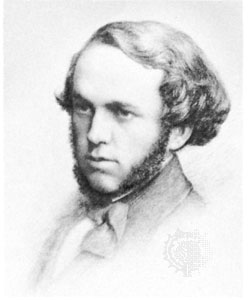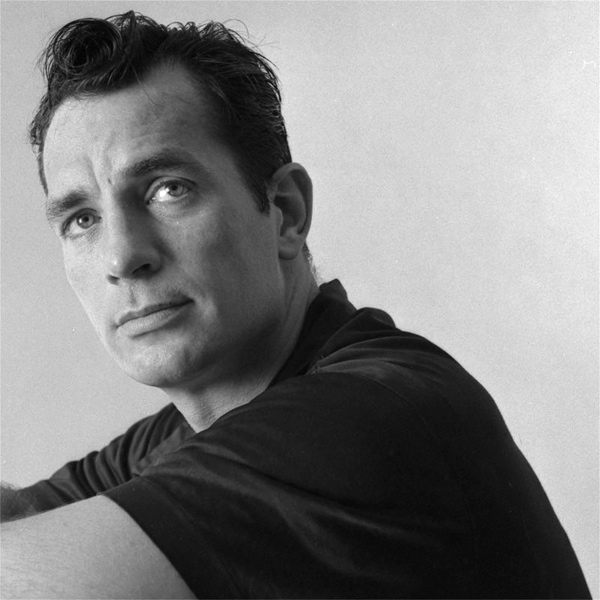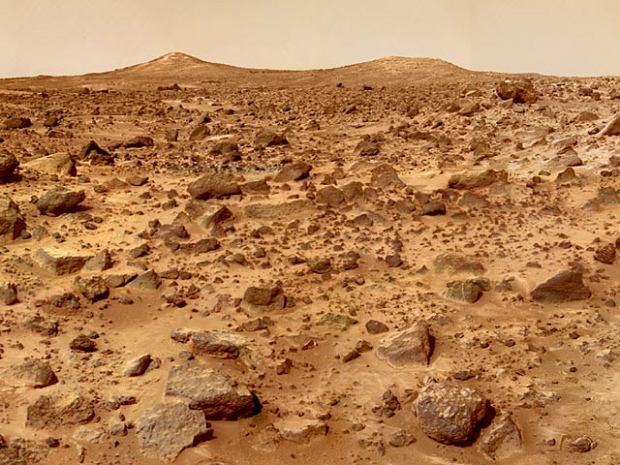I think I can say without fear of contradiction that this is the greatest 12-inch action figure the world has ever known.
A PICTURE OF PAPA FOR TODAY
At sea, 1950.
THE CIRCLE OF CASH

The other day I went over to the Mandalay Bay Casino to buy some tickets to The Lion King for myself, my sister and her two kids. I scored some great seats but they were expensive — very expensive. I felt a tinge of guilt — surely it would have been more responsible to settle for cheaper seats further back.
Now here's where the genius of the modern casino shows itself most clearly. The Lion King box office is located right next to the Mandalay Bay's card room. I looked over at it after I bought the tickets and saw that there were several games in progress, even though it was just after 10 in the morning.
I was seized with an irresistible thought — if I bought in to one of those games, got some good cards and played them well, I could win back all the money I just spent on the tickets in a matter of hours. The alternate possibility, that I could lose my buy-in in a matter of minutes and walk out of the casino even poorer than I already was, hardly figured into my thinking.
I bought in to a game, got some good cards, played them well and started making money. I was very selective about the hands I stayed in with, didn't chase long-shot draws and got some invaluable help from a few players at the table who just couldn't bring themselves to fold what were obviously second-best hands.
I played for about three hours and only won four or five pots, but three of them were monsters. I looked down at a certain point and saw that I was up about the amount I paid for the tickets. I racked my chips, cashed them in and walked out into the grueling heat of the valet parking pick-up stand.
Back home I popped open a beer — it was the end of the day for me — sat back in an armchair and felt just fine. I'll be seeing The Lion King for free. Acuna matata.
TOM WATSON AT THE BRITISH OPEN: AN ECHO
Tho' much is taken, much abides; and though
We are not now that strength which in old days
Moved earth and heaven; that which we are, we are;
One equal temper of heroic hearts,
Made weak by time and fate, but strong in will
To strive, to seek, to find, and not to yield.
MOON
This is a photograph of Buzz Aldrin, the second human being to walk on the moon, taken by Neil Armstrong, the first human being to walk on the moon. Apparently, Aldrin didn't take any color still photographs of Armstrong on the lunar surface, but Armstrong did manage to snap a self-portrait here, reflected in Aldrin's helmet visor.
NUDE WITH CIGARETTE
This was taken a long time ago, so it's o. k.
A NEW YORKER CARTOON FOR TODAY
From the 80s, I think.
Booklovers will understand the meaning of this. I sometimes seek, and in fact currently possess, imaginary books.
McSORLEY'S
And malt does more than Milton can
To justify God's ways to man.
— A. E. Housman
The great caricaturist Drew Friedman recently designed the label above for one of McSorley's house brews. McSorley's, in downtown Manhattan, is the oldest continuously operating bar in New York, going strong, or at least going, since before the Civil War. It has a special place in my heart, for it was there I began my lifelong love affair with beer.
In 1968, I spent the summer of my 18th year in the East Village, NYC, in an apartment near McSorley's. The bar had not at that time been adopted by NYU frat boys, and was a dive, little changed from the 19th Century. Old, grizzled men, many of them retired merchant seamen, hung out there in the afternoons drinking the fine house ales and filling up on the cheap sandwiches sold at the bar. The drinking age was 18 back in those days, and my friends and I hung out there in the afternoons, too. It was a grubby but magical place. It looked exactly the way it looks in the 1912 painting below by John Sloan:
Women were not allowed in McSorley's then — a 19th-Century policy that would soon be challenged by feminist activists. The first of them who walked in and demanded to be served got a pitcher of beer emptied over her head. The courts eventually ruled that McSorley's could not legally bar women. This opened the way to its current status as a hipsters's joint. It still looks the same as it always did but cannot be visited by sane people at most hours of the day and certainly not after dark.
I'm glad that women are served there now, of course, and its popularity will insure its survival for another century or so, but the hiraeth comes upon me when I think of it as it was once — the hiraeth, a Welsh word that means “the longing for what has been”.
The quote above (thanks, Django) is from a poem by Housman called “Terence, This Is Stupid Stuff”, which also contains the following lovely lines:
Oh I have been to Ludlow fair
And left my necktie God knows where,
And carried half way home, or near,
Pints and quarts of Ludlow beer:
Then the world seemed none so bad,
And I myself a sterling lad;
And down in lovely muck I've lain,
Happy till I woke again.
EVIDENCE
[Image © 1976 Langdon Clay]
My friend Lang Clay recently sent me the photo above which he took in 1976. That's me on the left, standing with a pal in front of the doorman's station at the St. Regis Hotel in New York City.
I'm having a hard time bringing myself to believe that I was ever that young, but the photographic evidence seems to be conclusive.
MOCKINGBIRD

Paul Zahl, of this site's The Zahl File, is, as I've mentioned before, a preacher, but his most impressive contribution to the revival of humane religion in our time may have been fathering three sons who are also preachers — this is where Protestantism has a distinct advantage over Catholicism in keeping the clergy ranks full.
His sons are all contributors to the Mockingbird blog, which you should check out. Mockingbird is a youth-oriented Christian organization based in New York and its blog is both serious and cheerful, with a cheeky attitude towards popular culture that you'll find refreshing, and probably surprising if all you know of Evangelical Christianity is that part of it which attracts the media's attention — the grim, self-righteous, judgmental and often spectacularly hypocritical part.
I myself have no use for institutionalized religion of any stripe, but I've never forgotten something Camille Paglia once said . . . roughly, “Evangelical Christians are the only group in America who are asking the right questions, it's just that they're coming up with all the wrong answers.” That may be true as a general rule, but the right questions are still the right questions.

Incidentally, if you scroll down the main page of the Mockingbird blog, or click here, you'll find a very interesting piece by Paul Zahl about three extra-ecclesiastical religious artists — the Victorian novelist Mark Rutherford, George Harrison and Jack Kerouac.
A CLOWN FOR TODAY
. . . with two bonus clowns included free — all you pay is shipping and handling.
[Thanks to The Gunslinger for the image.]
A THOUSAND GUYS IN LOWELL
There are 1000 guys in Lowell who know more about heaven than I do.
— Jack Kerouac
Jack Kerouac left an amazing portrait of America in the second half of the 20th century — paying attention to the everyday warp and woof of things and their mythic role in the unconscious epic of the nation. To find anything comparable in the art of our time you have to look to the photographs of Walker Evans and William Eggleston, especially Eggleston.
Kerouac celebrated and eviscerated American places in long, impressionistic passages in his writing and in brief epithets tossed off in passing. These epithets, taken together, have something of the quality of the Catalog Of the Ships in The Iliad.
Paul Zahl, a regular contributor here, discusses Kerouac's geographical epithets, about America and other places, with some choice examples:
A JACK KEROUAC GEOGRAPHICAL GLOSSARY
by Paul Zahl
Kerouac had a wonderful way with vivid adjectival phrases.
In his letters especially, and wherever he could write free of
stricture or zealous editor, he would use jammed-together phrases to
describe the places he visited, the people he met, and the phenomena he
observed.
I have made a little study of Kerouac's descriptive phrases for the
cities and towns, and even foreign countries, in which he spent time.
For example he described Morocco as the place where one could see “the
true glory of religion once and for all; in these humble, often
mean-to-animals people”.
If you have spent time in a Middle-Eastern country, this phrase
instantly connects. How many people I know who have left their
inherited religion in the West and are impressed by exactly the phenomenon
Kerouac observes, right down to the flogging of the camels.
Here is a little 'Beat' geographical glossary, from the man who saw,
and wrote what he saw.
Oh, and some of them may offend you if you actually live in the place
he is describing. When Kerouac refers to “rainytown Pittsburgh”, he
captures the essence of that particular city. But Pittsburghers don't
see it this way at all!
So hold on to your hats. And get ready to smile, and maybe wince a
little.
(All these phrases come from the letters of Jack Kerouac composed
between 1957 and 1969, which are collected in the 1999 Viking Press publication edited by Ann Charters.)
Rock n Roll Hooligan England
sick old Buddhaless Europe
California TOO MANY COPS AND TOO MANY LAWS and general killjoy culture
Total Police Control America
Doom Mexico
(Kerouac survived an earthquake in Mexico City, and was
also fascinated by the interest in death which he saw in the culture
there.)
“Orlando Florida”
(Kerouac complained that you could not buy On the
Road at any newsstand in Orlando, where he and his mother lived for two
fairly long periods, so that city for him would always be in quotes.)
nightmare New Orleans
thank God for Spain! All living creatures are Don Quixote
San Francisco, that town of poetry and hate
unholy Frisco
Muckland Central Florida in Febiary (sic)
midtown New York sillies world
this New York world of telephones and appointments
peaceful Florida, winter Florida, Florida peace
Massachusetts boy-dreams of Harvard
the South where everybody is DEAD
And thinking globally . . .
so goes the Dostoyevskyan world
And from Visions of Gerard . . .
That hat, with its strange Dostoyevskyan slant, belongs to the West,
this side of this hairball, earth
the world, the uncooperative and unmannerly divisionists, the bloody
Godless forever
Home again . . .
overcommunicating America
You could probably write an essay on every pungent phrase that Kerouac
comes up with. You may also be offended by his incautious descriptions. Furthermore, they were mostly written down under the influence of
alcohol, by the author's own admission.
Yet they are evocative and at times (to me) inspired. They are also
very funny. After just a few days in London, thirty years before the rise of the
“soccer yob”, Kerouac spoke of “Rock n Roll Hooligan England”. What prescient voice is this?
If this starter glossary re-connects you with Kerouac's
voice, the voice of a man Allen Ginsberg described as “heaven's recording angel',
and sends you back to his work, try writing down more of these phrases as they catch your eye. As your Catalog grows you'll wonder, “Where did this man receive his wisdom?” and “Did
he not grow up right here in Nazareth, and do we not know his mother
and his brothers and his sisters?”

[Editor's Note: “Overcommunicating America” — we live there now, all right. And even a man who could write, decades ago, “California TOO MANY COPS AND TOO MANY LAWS and general killjoy culture” might be surprised at the way The Wellness State has calcified into his most extreme vision of the place. Jack apparently never visited my hometown, Las Vegas, but he would have nailed it, too, I imagine, in a way that would make me wince . . . and laugh. Paul Zahl just moved away from a suburb of Washington, D. C., where Kerouac and Gregory Corso once dropped in unannounced on the poet Randall Jarrell and found him “hobnobbing in Chevy Chase”, a world center of hobnobbing. Kerouac will find you wherever you are, America — you can run but you can't hide from heaven's recording angel.]
The map above is from one of Kerouac's diaries. The portraits are by Tom Palumbo. You can find more of Paul's articles in The Zahl File here.
AN AL MOORE PIN-UP FOR TODAY
. . . change you can believe in.
MIRAGE

We were driving through a landscape reminiscent of ones you see in images beamed back to Earth from the Mars Rover (above) — severe, rocky, dry, empty, with no visible signs of life. It was a part of the Mojave Desert near Spring Mountain, just past the outskirts of Las Vegas, in the Lake Mead National Recreation Area.
We were myself, my sister and her two kids Harry and Nora, just arrived for their annual Dream Vacation in Las Vegas. Harry and Nora's dad, a film editor, sometimes known as the hardest working man in show business, is almost always on a job during their summer vacation, so my sister brings them here for an escape.
Rounding a bend on the twisting desert road we saw what we were looking for — a kind of mirage in the midst of the desert, Lake Las Vegas, an artificial lake at the edge of Henderson, Nevada, a Las Vegas suburb. It is surrounded by green swards, most of which are golf courses, and by what look like cookie-cutter versions of Italian villas, most of which are condos.
We parked near a little “village” at the edge of the lake, near the MonteLago Resort. This has shops and restaurants in a facsimile Italian lakeside town, next to a marina. It was violently hot and we headed more or less directly to a restaurant by the water called Bernard's Bistro. It was a genuinely charming place, somewhat upscale, and we had an exceptionally good lunch there.
This was the start of Harry and Nora's fifth summer visit to Las Vegas, and we'd wanted to see something we'd never seen before, something très Vegas, which means très weird but also weirdly amusing.
We saw it and were content.
[Photos courtesy of the Mars Rover, the Vegas Rover (Harry Rossi) and Lloydville.]
THE SEA, THE SEA
Marilyn at the beach.
What is it about that girl?
